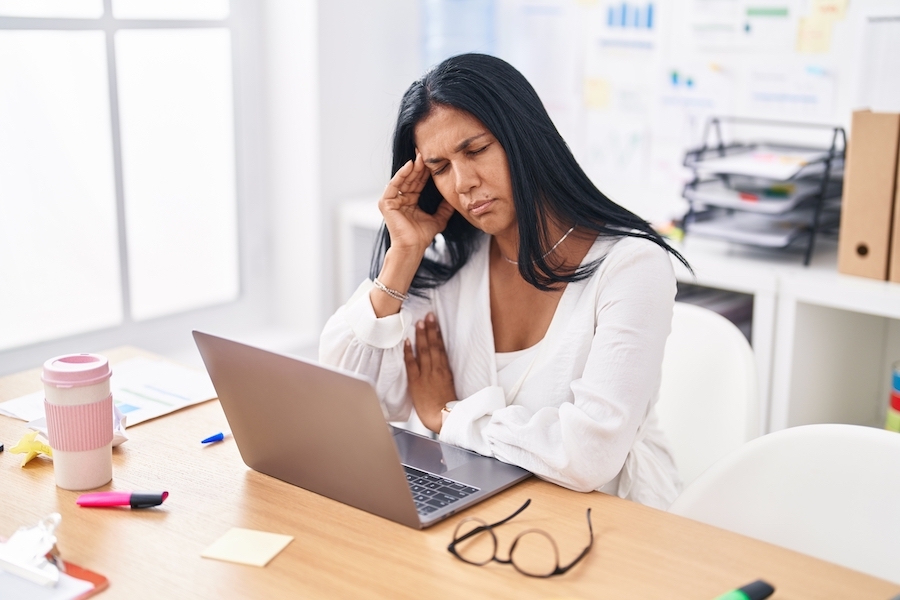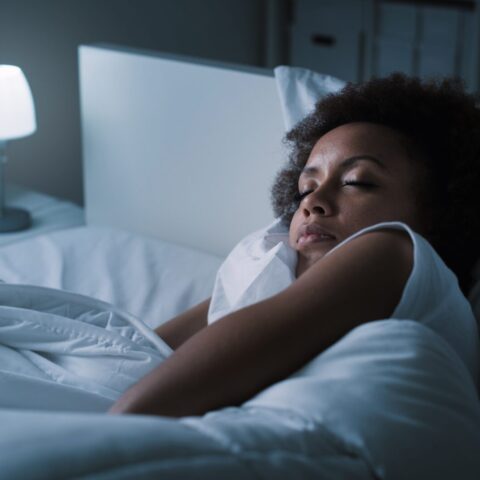Beat the Afternoon Slump for Good

You look at the clock on your laptop just as it rolls over to 3 p.m. and it’s right on time; the dreaded afternoon slump is here and it’s siphoning away your energy. Many people accept the afternoon energy slump as a regular part of their day, but it doesn’t have to be this way. You can break the cycle and beat the slump with a few simple steps that don’t include caffeinated beverages or midday snacking.
What Causes the Afternoon Slump?
A High-Carb Lunch Means a Mid-Afternoon Crash
If you had a high-carbohydrate lunch, the calories you consumed will increase your blood sugar and spike your insulin. This gives you a burst of energy, but later your insulin levels plummet and you feel tired.
Daily Circadian Rhythm
Your core body temperature drops in the afternoon too, stimulating the release of melatonin, the chemical in your brain that causes a feeling of tiredness and encourages you to sleep.
High-Carb Meals Set You Up for the Carb Crash
Carbohydrates are present in most foods. On The Paleo Diet®, we get them mostly from fruits and vegetables and in starchy foods like sweet potatoes, plantains, and some squashes. But when it comes to carbohydrates, eating fewer of them can lead to longer-lasting energy.
A carbohydrate-rich breakfast is going to give you a boost of energy in the morning, but by spiking your insulin to cover that rise in blood sugar, it will burn off quickly and have you feeling hungry again before lunchtime.
That ravenous appetite is going to push your lunchtime tastes toward eating more high-carbohydrate foods to recover, and the cycle will repeat, causing that dreaded mid-afternoon slump.
If you want to avoid the crash, cut back on those morning carbs so you’re burning mostly fat and not sugar for fuel. Keep your lunch carbohydrate intake low as well.
Four Tips for Beating the Afternoon Energy Slump
1. Eat a Low-Carb, High-Protein Breakfast
Breakfast is the most important meal of the day, but to avoid that afternoon slump, keep your starch and sugar intake to a minimum in the morning. Sweet potatoes, plantains, and acorn squash are all healthy food choices, but they will fuel the cycle of blood sugar spikes and energy crashes throughout the day if you eat them for breakfast. Try to limit your serving size of carbs in the morning, or better yet, save them for your last meal of the day when feeling relaxed and sleepy can be productive in promoting a good night’s sleep. Instead, focus on high-quality protein, healthy fats, and colorful vegetables for breakfast and lunch.
Not sure what to eat for breakfast? Check out these Paleo breakfast recipes.
2. Hydrate Well
Drinking plenty of water not only reduces fatigue, but it also helps your body clear out the byproducts of metabolism, lubricates joints, and aids in digestion, circulation, pain tolerance, and brain function. Drink before you’re thirsty, because by the time your body signals your need for fluids, you’ll already be dehydrated. Be sure to avoid (or limit) caffeinated beverages, because caffeine is a diuretic and can lead to more dehydration.
Let’s face it, water isn’t the most exciting thing to drink. An alternative way to stay hydrated, have a little flavor, and increase energy levels is to consume natural electrolytes. Electrolytes actually help move water and nutrients to the cells and help remove waste from your cells. Take a look at our top 10 Paleo-approved natural electrolyte drinks, and bring one to work with you next time for a tasty hydration treat.
3. Exercise to Smooth Out Carb-Burning
You’d think that exercise would actually make you more tired and contribute further to your late afternoon energy deficiency. However, exercise actually helps stabilize blood sugar levels for about 24 hours by increasing your muscle cells’ ability to take up glucose. This means your muscles are able to burn the carbohydrates in your food more efficiently. Being more efficient with carbs can help reduce the insulin spikes and drops that can lead to afternoon sleepiness.
4. Take Sleep Seriously
Sleep plays a major role in how your body regulates blood sugar. According to the National Institute of Health, “two hormones that play a major role in appetite regulation—leptin, a satiety hormone, and ghrelin, a hunger hormone—are influenced by sleep.” Make sleep a priority. The better you sleep at night, the more energy you’ll have during the day, the less likely you are to get sick, and the more stable your hormones.
Develop a routine of winding down before bedtime, so your body knows it’s time to relax. Be sure to put your phone away at least an hour before bedtime. It’s a tough habit to kick, but the blue light that your phone screen emits actually prohibits melatonin production, making it harder to fall asleep. Instead, unwind by making a cup of hot tea, reading a book, or listening to your favorite playlist. Make this your bedtime routine and be sure to stick to it!
By adapting The Paleo Diet to your lifestyle, that dreaded afternoon energy slump you’ve come to accept every day will be eliminated from your routine. Living a Paleo lifestyle will feed your body for productivity and help provide you with steady energy throughout the day.
Isabella Mead
Isabella Mead is the Assistant Project Manager at The Paleo Diet and has experience in creating digital content for lifestyle and nutrition brands.
More About The Author




